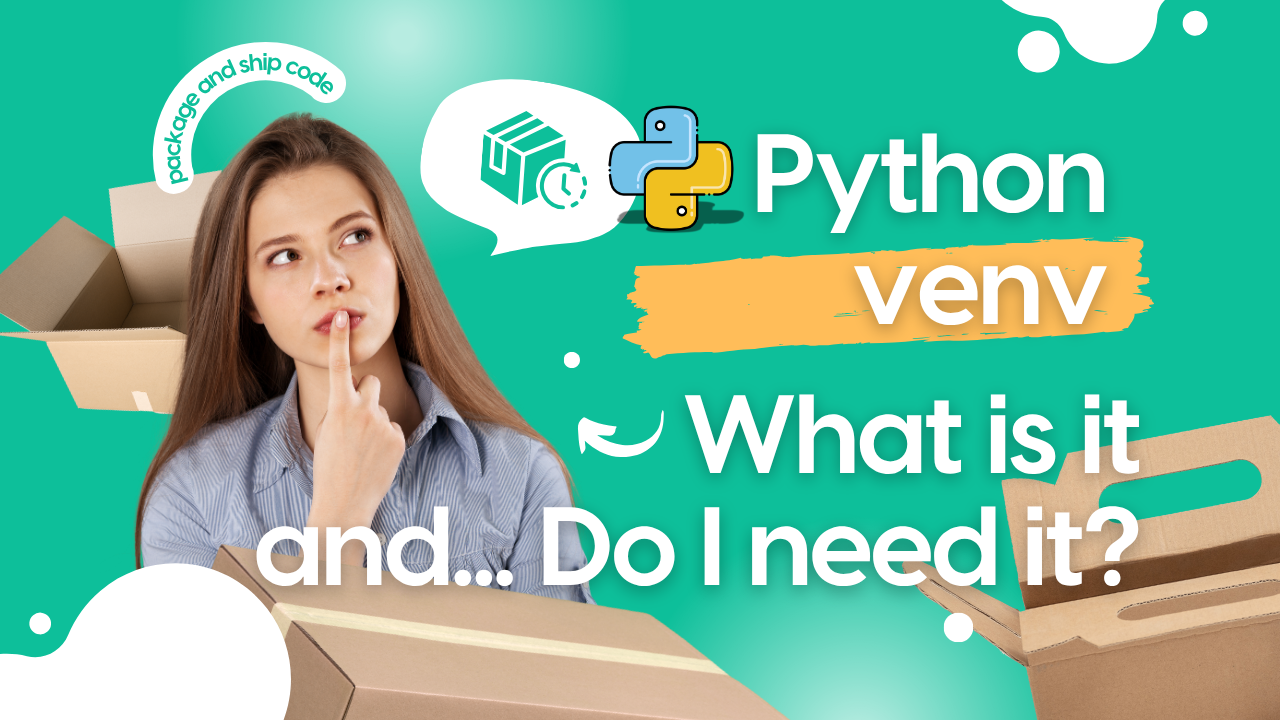Watch on YouTube
https://www.youtube.com/watch?v=Fq6h5uhq4NQ
What’s a Virtual Environment?
Imagine you’re building with LEGOs. You have one project that needs all red bricks, and another that needs blue ones. What if the bricks got mixed up?
That would be a mess, right? 🤪
That’s why Python gives you a magic bubble — called a virtual environment — where you can keep all your special bricks (code tools and libraries) safe for just one project.
Why make a Virtual Environment (Python Bubble)?
Here’s why it’s super smart:
-
🧩 Each Project Gets its Own Tools
You can build different things with different blocks — no more mixing red and blue! -
🧼 Keep Your Coding Desk Clean
Don’t let every toy out at once. Only open what you need. -
🔁 Share Your Projects Easily
When you share your code with a friend, you can also give them the list of tools you used — so it works the same way on their computer.
Let’s Make Your First Virtual Environment (Python Bubble)!
- Open the Coding Door (a.k.a. Terminal)
On your computer, open the Terminal (on Mac) or Command Prompt (on Windows). It looks like a black screen with text.
- Check if python is installed
# Windows Users
python --version
# Mac and Linux Users
python --version
# or
python3 --version
You should see something like python 3.11.5 in your output. The number/version might be different. But you want at least version 3
If python doesn’t appear to be installed, you can get a free copy from their website: python.org
- Before we make our magic bubble (virtual environment) we need to create a new project folder. In your terminal or command prompt type: (we recommend you be in your documents directory)
mkdir magic_bubble
mkdir: this mean make directory
- Create your magic bubble 🫧
python -m venv venv
# or
python3 -m venv venv
This makes a new folder called venv where all your project’s magic tools will live.
- Jump inside the Bubble and activate 🪄
To use your bubble (virtual environment), you have to “activate” it.
🖥️ On Mac/Linux:
source bubble/bin/activate
🖥️ On Windows:
.\bubble\Scripts\activate
You’ll know it worked when your terminal shows something like this:
(venv)
# or whatever you named the virtual environment
Cool! You’re inside your virtual environment (bubble)!
🎉 You Did It!
You just made your first Python virtual environment (bubble)! You’re now ready to create clean, organized, new Python applications.
Testing
Now that we have the virtual environment running. Let’s start by testing out a custom package. For this test we will use the library: pyjokes.
- In your project directory with your virtual enviornment activated install
pyjokesby typing:
# (venv) $ = is the activated virtual environment. Do not type that.
(venv) $ pip install pyjokes
-
Once it is installed let’s create a new simple python app. You can use either the command line or an Integrated Development Environment (IDE). - I will be using the free tool VSCode
-
In VSCode you might have to open the
terminalagain re-activate your virtual environment. -
In your project directory create a file called:
app.py -
Then in your
app.pyfile type the following:
import pyjokes
print(pyjokes.get_joke())
- Back in your terminal type:
python app.py
This should output a random joke in your terminal. You can run this over and over to get a new joke each time.
- Let’s
deactivatethe virtual environment. In your terminal type:
deactivate
This should remove the text (venv) in your terminal.
- Now try running your app again. It should fail because the
pyjokeslibrary is not installed in your global environment. It was only installed in your virtual environment.
It is recommended that you always create a new virtual environment for each new project/application.
The final process is to create requirements.txt file that contains all the libraries needed for the project to run.
Read how to do this on the short tutorial: Packaging Your Python Project with requirements.txt …Coming soon…
